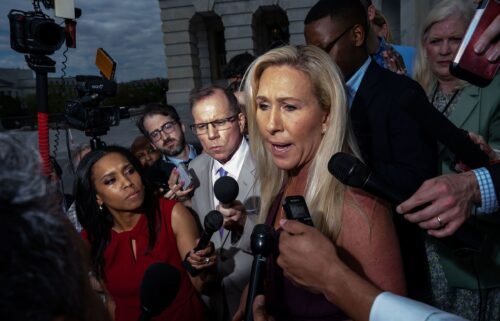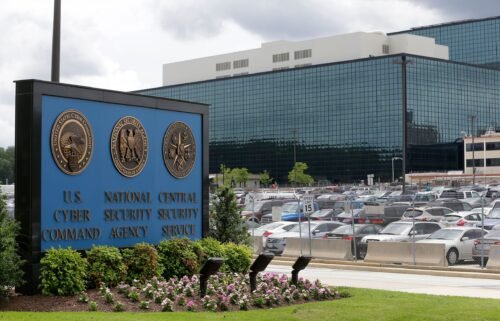Camp David’s long history as a diplomatic hotspot
By Nikki Carvajal, CNN
(CNN) — On a fall day in September, two men sat watching movies about cowboys and the Old West at a rustic retreat in Maryland.
It could have been a relaxing way to spend a weekend – except the men were President Dwight D. Eisenhower and Soviet Premier Nikita Khrushchev, and it was the height of the Cold War.
Khrushchev was the first Soviet premier to make an official visit to the United States – and Eisenhower decided to take him to Camp David for important conversations about foreign affairs, and a “really American experience.”
President Joe Biden will follow in the footsteps of US presidents before him when he holds a crucial foreign policy meeting with the leaders of Japan and South Korea at the camp on Friday.
Camp David – originally dubbed Shangri-La – was created by President Franklin D. Roosevelt in 1942 during World War II. He wanted a secure presidential hideaway outside of DC, and quickly gave the spot dueling purposes.
“He soon after sets this precedent of using the site as a retreat and for diplomacy, because in 1943 he welcomes Prime Minister Winston Churchill to Camp David, and we discuss World War II and the US efforts and allied efforts there,” historian Sarah Fling with the White House Historical Association said. “So, it’s really from the very beginning that we see Camp David being used for both of these uses, and most presidents have used Camp David not only as a retreat, but also for either policy conversations or summits or these more political uses as well.”
The most famous of all the diplomatic events held at Camp David is likely the September 1978 Camp David Accords negotiations, Fling said.
Then-President Jimmy Carter acted as mediator between Egyptian President Anwar Sadat and Israeli Prime Minister Menachem Begin. The men spent about two weeks there at Camp David negotiating a pair of political agreements that would eventually lead to the Egypt–Israel peace treaty and a Nobel Peace Prize for Sadat and Begin.
President Bill Clinton tried for another Middle East peace deal as he hosted Israeli Prime Minister Ehud Barak and Palestinian leader Yasser Arafat at Camp David in 2000, but those talks ultimately failed to reach an agreement.
“Camp David is a really great location when we’re talking to get to know world leaders one on one,” Fling said. “It’s very private and secluded, so they can really focus on the conversations that are happening, but it’s also much less formal.”
One of the perks of the spot is that you can “get to know somebody on a real one-to-one basis, you get to have real conversations out of the constant chaos … that you have in Washington, DC,” she said.
“It’s definitely different than what you would experience at the White House, right?,” Fling asked. “It’s not a formal dinner. It’s not these formal events. Instead, you might go skeet shooting, or you might go bowling, or you might take a jog around Camp David. So, it’s very different in that sense.”
While every president has used the space in slightly different ways, almost all of them tried at times to use it for diplomacy – none more so than George W. Bush.
“He hosted many foreign visitors there including leaders from South Korea, Pakistan, Great Britain and more,” Fling said.
The largest gathering of world leaders at Camp David was in 2012 when President Barack Obama hosted the G8 summit. Nine foreign leaders, plus Obama, attended.
Even President Donald Trump, who famously eschewed the retreat in favor of his own properties, tried to host secret talks with Afghan and Taliban officials – plans that were eventually scrapped, and announced in 2019 he would hold the following year’s G7 meeting there, before Covid caused the event to go virtual.
The-CNN-Wire
™ & © 2023 Cable News Network, Inc., a Warner Bros. Discovery Company. All rights reserved.



